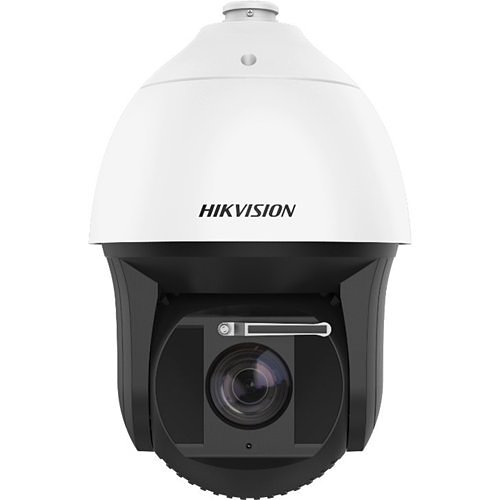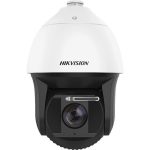PTZ Cameras, or Pan-Tilt-Zoom Dome Cameras, are a type of security camera known for their versatility, precision, and powerful surveillance capabilities. These cameras are widely used in both commercial and residential settings for enhanced monitoring, covering large areas with ease. In this article, we’ll explore the functionality, features, and applications of PTZ dome cameras, compare them to other camera types, and examine how they can meet specific security needs.
Introduction to PTZ Dome Cameras
A PTZ dome camera combines three main movements: pan, tilt, and zoom. These cameras are housed in a dome-shaped cover, which provides protection and helps conceal the camera’s direction. This design enhances its usability in surveillance scenarios where discreet monitoring is required. PTZ dome cameras are commonly used in areas where a wide coverage range is necessary, such as parking lots, stadiums, shopping centers, and industrial facilities.
Core Components of a PTZ Dome Camera
- Pan Mechanism: Enables the camera to move horizontally, covering a 360-degree range.
- Tilt Mechanism: Allows the camera to move vertically, typically with a 90-degree tilt.
- Zoom Lens: Optical zoom lenses provide detailed close-ups, enhancing the camera’s range without losing image quality.
- Motorized Controls: Built-in motors control the pan, tilt, and zoom functions, either manually by an operator or automatically using pre-set programming.
- Protective Dome: The dome casing protects the camera from weather elements, vandalism, and environmental challenges.
How PTZ Dome Cameras Work
PTZ dome cameras operate by allowing remote or automated control of the pan, tilt, and zoom functions. The camera can be programmed to focus on specific areas within a certain time frame or triggered to follow movement detected within its range. Advanced PTZ cameras are equipped with AI-powered analytics, enabling features like auto-tracking, face recognition, and behavior analysis.
- Manual Control: Operators can control the camera’s direction and zoom from a remote station, often via a joystick or mouse.
- Preset Programming: PTZ cameras can be set up to follow specific paths or focus on particular points. These preset paths allow the camera to monitor multiple areas over time.
- Auto-Tracking: Some PTZ cameras are designed to follow movement automatically, keeping the subject within the frame.
Technical Chart: PTZ Movements and Capabilities
| Movement | Description | Typical Range |
|---|---|---|
| Pan | Horizontal movement of the lens | 360° full rotation |
| Tilt | Vertical movement of the lens | 90° (some models go beyond) |
| Zoom | Optical zoom to increase detail | Up to 40x optical zoom |
| Auto-Tracking | Follows motion in frame | Enabled by AI and analytics |
| Preset Points | Pre-set locations to monitor | 50-300 points (model dependent) |
Features of PTZ Dome Cameras
1. Pan, Tilt, and Zoom Capabilities
The most notable features of PTZ dome cameras are their pan, tilt, and zoom capabilities. These functions enable extensive area coverage and detailed surveillance, making it possible to monitor vast areas without requiring multiple fixed cameras.
2. Wide Dynamic Range (WDR)
PTZ cameras often have WDR technology, which allows them to handle high contrast lighting conditions effectively. This feature is beneficial for areas with fluctuating light levels, such as entrances and outdoor spaces.
3. Night Vision and Low Light Performance
Many PTZ dome cameras are equipped with infrared (IR) LEDs for night vision, providing visibility in low-light conditions. Some models use starlight technology for enhanced color night vision.
4. Weatherproof and Vandal-Resistant Design
The dome structure is often made from durable materials, such as polycarbonate or metal, to protect the camera from environmental challenges and tampering. Many PTZ dome cameras have an IP66 or IP67 weatherproof rating and an IK10 vandal-resistant rating.
5. Advanced Analytics and AI
Higher-end PTZ dome cameras include AI-powered features like motion detection, auto-tracking, face recognition, and even behavior analysis. These analytics provide proactive surveillance, where the camera can notify security personnel when specific events occur.
Comparison with Other Security Camera Types
| Camera Type | Range of Motion | Field of View | Zoom Capability | Use Cases |
|---|---|---|---|---|
| PTZ Dome Camera | 360° pan, 90° tilt | Adjustable | Up to 40x optical zoom | Large areas (stadiums, malls) |
| Fixed Dome Camera | Static position | Fixed, wide-angle | Digital zoom only | Indoor spaces (offices, hallways) |
| Bullet Camera | Slightly adjustable, not 360° | Narrow field | Limited optical zoom | Targeted surveillance, outdoors |
| Fisheye Camera | 180° – 360° wide-angle lens | Ultra-wide | Digital zoom only | Indoor areas (lobbies, warehouses) |
| Box Camera | Static, limited adjustment | Adjustable | Interchangeable lenses | High-resolution monitoring |
Advantages of PTZ Dome Cameras
- 360-Degree Coverage: PTZ dome cameras cover a full 360 degrees, reducing the need for multiple cameras in large areas.
- Remote Adjustability: Pan, tilt, and zoom functions can be controlled remotely, allowing operators to zoom in on details or follow movement.
- Cost-Efficiency: Though PTZ dome cameras are often more expensive per unit, their ability to cover large areas can reduce overall installation costs.
- Discreet Appearance: The dome design hides the camera’s viewing direction, making it difficult for intruders to determine where the camera is pointing.
Use Cases for PTZ Dome Cameras
- Public Spaces and Stadiums: PTZ cameras are ideal for wide-area monitoring in places like sports arenas and public squares, where continuous coverage of large, open areas is required.
- Retail and Shopping Centers: PTZ cameras provide flexible surveillance, allowing operators to zoom in on suspicious activities or focus on key areas during peak hours.
- Transportation Hubs: Airports, bus terminals, and train stations benefit from PTZ cameras to monitor crowds and identify potential security threats.
- Industrial Facilities: PTZ cameras are beneficial for monitoring large manufacturing floors, outdoor storage, and perimeters.
PTZ Dome Camera Technology: A Closer Look at Optical and Digital Zoom
PTZ dome cameras use optical zoom to maintain high image quality while zooming in, unlike digital zoom, which can degrade image resolution. Here’s a breakdown of the differences:
| Type of Zoom | Description | Quality | Common in PTZ? |
|---|---|---|---|
| Optical Zoom | Uses lenses to magnify image | High | Yes |
| Digital Zoom | Enlarges pixels in the digital image | Moderate to low | No, only supplemental |
Installation and Setup of PTZ Dome Cameras
Setting up PTZ dome cameras can be complex due to their motorized controls and integration with monitoring software. Here are a few steps involved:
- Mounting: Install the camera at a high vantage point for maximum coverage. Wall mounts, ceiling mounts, and poles are common options.
- Wiring and Power: PTZ cameras often require PoE (Power over Ethernet) to support both power and data transmission over a single cable.
- Configuration: Use the camera’s software interface to set up presets, patrol paths, and motion detection zones. These settings allow the camera to perform automated functions.
- Integration with Security System: PTZ cameras can be integrated with video management software (VMS) for advanced analytics, remote monitoring, and alert configurations.
Pros and Cons of PTZ Dome Cameras
| Pros | Cons |
|---|---|
| Covers large areas with a single camera | Higher initial cost |
| Remote adjustability for flexible surveillance | Moving parts may require more maintenance |
| Concealed direction increases security | May need technical expertise for setup |
| Advanced analytics for proactive security | Limited zoom compared to static box cameras |
Real-Life Performance and ROI of PTZ Dome Cameras
The return on investment (ROI) for PTZ dome cameras is high in environments requiring flexible, adaptable surveillance. A single PTZ camera can replace multiple fixed cameras, reducing equipment and installation costs. Additionally, advanced features like auto-tracking and zoom improve security response, allowing personnel to act swiftly.
PTZ Dome Cameras offer unparalleled versatility and functionality for surveillance. With their ability to pan, tilt, and zoom, they provide extensive coverage, making them suitable for a wide variety of applications, from shopping malls to industrial sites. Compared to other camera types, PTZ dome cameras offer the added benefit of covering large areas, adapting to dynamic situations, and enabling detailed monitoring—all in a compact, protected design.
These cameras are a reliable choice for comprehensive, flexible security systems, providing peace of mind for businesses that need CCTV Installation.





